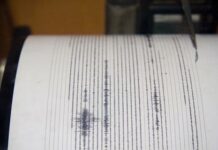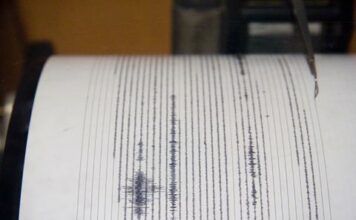MORGAN HILL
– A plume of a chemical from an abandoned industrial site in
Morgan Hill has traveled much farther through an underground
aquifer than originally thought and could cause heath problems for
residents who rely on hundreds of local wells.
MORGAN HILL – A plume of a chemical from an abandoned industrial site in Morgan Hill has traveled much farther through an underground aquifer than originally thought and could cause heath problems for residents who rely on hundreds of local wells.
The chemical, potassium perchlorate, is known to cause tumors and thyroid problems, but so far, the amounts found in local wells are far below the danger levels, according to Santa Clara County Water District spokesman Mike DiMarco.
“At this point it’s not a huge public health threat,” he said.
The SCVWD announced Wednesday a state investigation had found that hundreds of private wells southeast of the site from Monterey Road to Foothill Avenue were in danger of being contaminated and would be tested. According to DiMarco, up to 450 wells are under scrutiny.
“It’s hard to test 400 to 500 wells,” DiMarco said. “You can test a well one day and get one reading, and test it a week later and get a different reading. So right now, there’s negotiations going on of how we are going to test this area.”
The Water District was to release informtion about the contamination at a news conference today at its headquarters in San Jose.
As last reported in The Morgan Hill Times on May 24, 2002, the Olin Corp. owns the property on Tennant Avenue near Railroad Avenue. Fusees, or highway safety flares, were manufactured on the site from 1955 to 1996, first by the Standard Fusee Co. and then by Olin.
Olin notified the state Office of Emergency Services and county Health Department on Aug. 29, 2000, after the perchlorate was detected.
Olin had been cleaning up the land – the buildings had been razed – when it found that the perchlorate had seeped down through the soil and into the underground water table. The contaminated plume was found to have traveled south, off the industrial site, and Olin notified the city.
No perchlorate was found in the city well in testing in December 2001.
Jim Ashcraft, city public works director, said the chemical ultimately reached a city well on Tennant that was shut down last April. A new well was drilled out of reach of the chemical plume on Condit Road and San Pedro Avenues, and a bill for $750,000 was sent to the Tennessee-based Olin. California state law says the responsibility of cleaning up contaminated property rests with the property owner, not the affected city.
Potassium perchlorate is a byproduct of fusee production and is used not only in flares and matches but in solid rocket propellants and fireworks. It is a naturally occuring salt.
The California Department of Health Services regards as unsafe any count above four parts per billion of perchlorate. The Tennant well averaged during testing 15 ppb at depths of 190 to 412 feet. Levels have been as high as 18 ppb at a depth of 200 feet, DiMarco said in May.
In January 2002 the state agency reduced its action level from 18 ppb to 4 ppb to provide a wider protective buffer for the public. Ashcraft said the state only began to require statewide testing for the chemical last year.
The city told owners of nearby wells in April 2002 to have their wells tested if the water was used for drinking. Exposure to perchlorate can cause thyroid problems and is especially risky to pregnant women and fetuses. The water district report states that adverse health effects are not anticipated from levels between 4 and 18 ppb.
The options for treating water contimated by perchlotate are limited. Home water treatment systems may not be effective, according to the Water District.
Boiling water will not remove percholate and may even concentrate it further. Research is under way to find practical and cost-effective methods of removing low levels of perchlorate from drinking water.
Standard Fusee and Olin Corp. also produced skeet and clay pigeons coated with lead chromate from 1965 to 1981 at the Tennant Avenue facility. Olin had begun testing the property in 2000 to prepare for a possible sale. Three monitoring wells were installed on the property in August 2000 to do environmental sampling.
There were indications of problems then, DiMarco said.
The Central Coast Regional Water Quality Control Board based in San Luis Obispo became involved when the plume was discovered last spring. The board investigated how large the plume was, in what direction it was moving and which public and private wells might be in danger.
DiMarco said it was not impossible that the property could be designated a super fund site, requiring a major clean up.
Anyone living in the affected area who wants their water tested should call the water district at 265-2607 ext. 2649.











